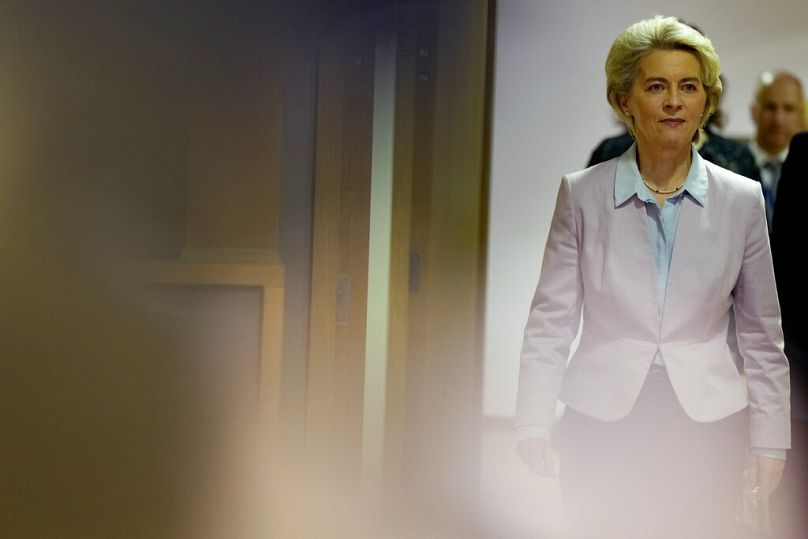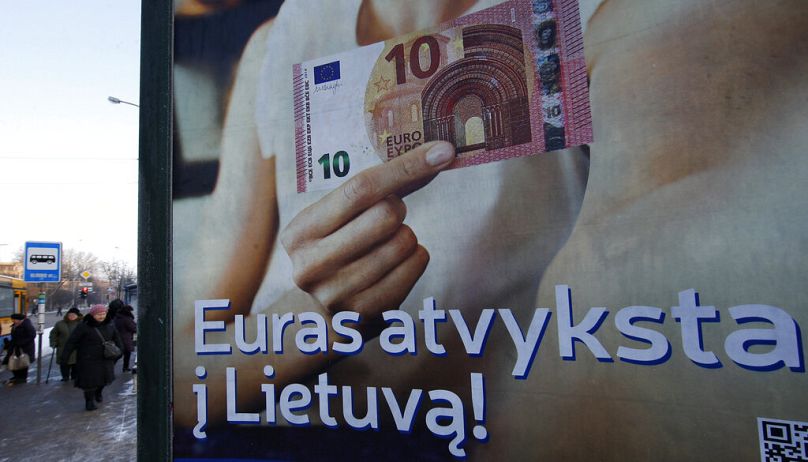It is not just about the money, it is about what each country — no matter its size — can bring to the table, Marius Stasiukaitis writes.
The Green Industrial Plan, comprehensive as it might be, falls short of an industrial policy that would work equally well across the entire European Union.
Instead, new policies set broad rules, leaving the actual industrial development strategy in the purview of individual member states.
While bolstering industry in manufacturing hotspots, this approach might significantly distort the market in ways that do a disservice not just to businesses but to the “green” part of the plan itself.
The EU's industrial policy should not turn into a subsidy race
A new era of competition is unfolding for investments in strategically vital sectors across the world.
Last year, the United States enacted the Inflation Reduction Act and Chips Act, introducing generous subsidies to incentivize investments in green technologies and semiconductors.
In February 2023, the EU followed with the Green Industrial Plan, which relaxed state aid rules for member states, granting them the ability to match subsidies offered in other regions around the globe.
While the intention is likely to prove to be a net positive for the EU, reducing the EU’s industrial policy's role to a rule set for a subsidy race between member states could prove to be costly.
For smaller economies, it might be a particularly difficult challenge. This has the potential to undermine Europe's green transition and weaken its competitiveness, losing prospective investment opportunities in the long run.
This could also imperil the bloc's cohesion policy
We have already seen the EU’s leading economies roll out the red carpet for major investors, backing their invitation with impressive sums.
For example, recent media reports have revealed that the German government provided Intel with €10 billion in subsidies to establish a €30bn chip plant within its territory.
Whereas France announced that it has received EU authorisation to grant €1.5bn in subsidies to a €5.2bn electric vehicle battery factory.
These announcements come at a time when many EU countries are facing rising borrowing costs, which could further complicate their efforts to secure significant additional funding for their industrial development.
The government deficit-to-GDP ratio in the eurozone stood at 3.6% in 2022 and might increase even further in 2023.
It is also a matter of relative cost. For smaller countries such as the Baltic States or Slovenia, the size of the subsidy that Germany granted to Intel alone would exceed 10% of their GDP.
No matter what they choose to do regarding upgrading their infrastructure, a subsidy in the billions would most likely trump that.
In this scenario, the EU's cohesion policy might also be jeopardised, as large countries will stronghold their position in tomorrow's industries.
A paradigm shift could make the EU more competitive
Most importantly, this approach will likely undermine Europe's green transition, making the process more costly.
A policy that favours larger countries with greater financial resources raises the risk of significant market distortions, diverting investments from locations in the EU where their lasting competitive advantages would be most viable.
The EU's industrial policy is more likely to succeed if it utilises the distinct strengths held by its member states.
This would require a paradigm shift in the EU's approach, moving beyond merely relaxing state aid rules and towards implementing a shared industrial development strategy and financing at the EU level.
However, it is a worthwhile step as this shift would make the EU more competitive on the global stage, capitalising on the strengths of its member-states that already have a long track record in attracting foreign direct investment.
Small advanced economies, such as the Baltic States or Nordic countries, hold the potential to propel the growth of green industries in the EU.
In contrast to the larger economies within the EU, they offer a more enticing business environment, showcase remarkable openness to foreign direct investment, boast ambitious renewable energy targets, and demonstrate a greater ability to adapt to the demands of future industries.
Smaller countries can also have ambitious plans
For instance, since the 1990s, Ireland has emerged as the premier EU destination for foreign direct investment, alluring multinational corporations across various sectors such as semiconductors, life sciences and digital technologies, despite its small size.
This is attributed to its favourable business environment, skilled workforce, and strategic location.
Furthermore, in recent times, several other nations have joined the league. According to the 2023 Greenfield FDI Performance Index, Portugal and Lithuania have remarkably attracted about six times more investment projects than the size of their economy would predict, positioning them as leading overachievers within the EU.
Notably, small advanced economies that have been focusing on attracting foreign direct investment to fuel their growth also have successfully put all the essential building blocks in place.
For example, the Baltic States, along with Denmark and Ireland, are ranked highest in the EU for their business environment in the Economic Freedom Ranking.
Renewable energy could provide another compelling reason why smaller countries in Southern or Northern Europe are strategically positioned to drive the growth of green industries. Nordic countries are already global leaders in renewable energy production, and the surplus of clean energy was crucial to the success of Northvolt's first battery factory in Sweden.
The Baltic States also have ambitious plans; for instance, Lithuania aims to meet 90% of its energy demand through local production of renewable energy by the end of this decade.
As the issue of energy independence is vital for countries on the eastern border of the EU, we are likely to see an acceleration of their green transition.
It's not about the size — it's about what you can bring to the table
The success of the EU's industrial policy and green transformation could hinge on the smaller countries within the EU. Some of these countries have already mastered the fundamentals of future economy — adaptability and flexibility.
This makes them ideal hubs for sandboxes or emerging industries with rapidly evolving technology.
And while financial incentives will retain strong appeal, they will not be able to replace the agility of the smaller European states, crucial for securing Europe’s competitiveness.
In other words, it is not just about the money, it is about what each country — no matter its size — can bring to the table.
Marius Stasiukaitis is the Head of Strategy at Invest Lithuania, a non-profit investment promotion agency founded in 2010 by the Ministry of Economy of the Republic of Lithuania.
At Euronews, we believe all views matter. Contact us at view@euronews.com to send pitches or submissions and be part of the conversation.















